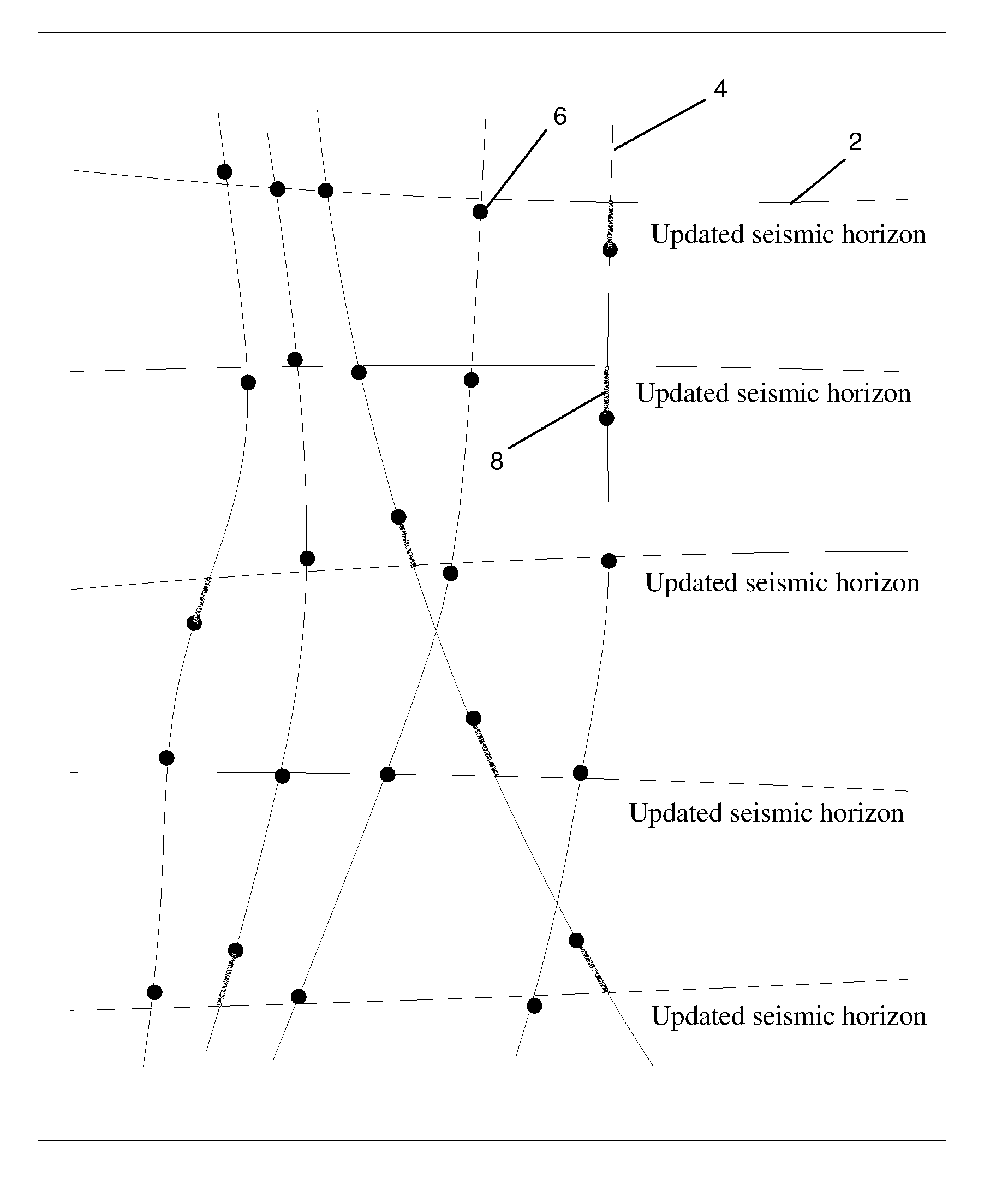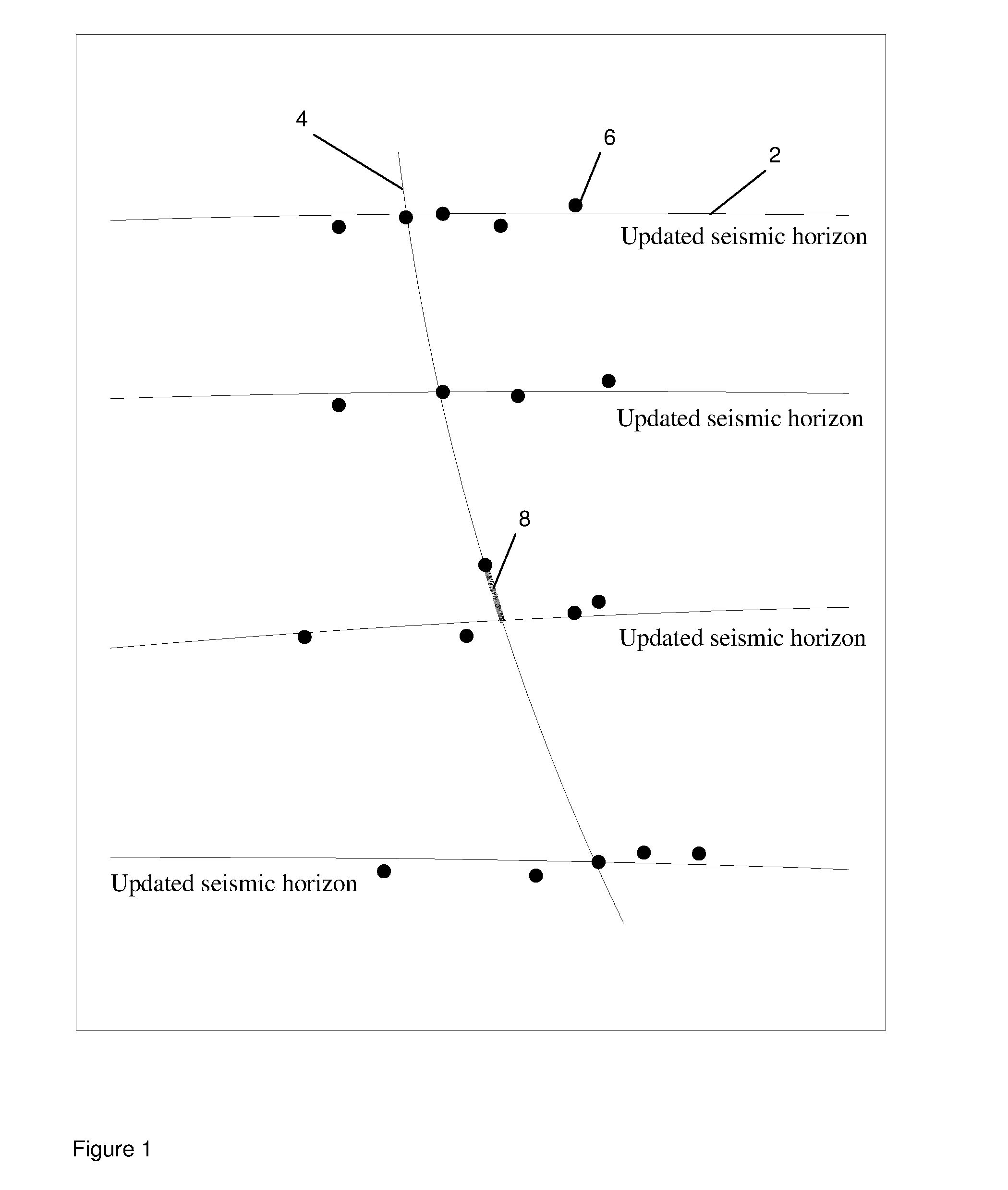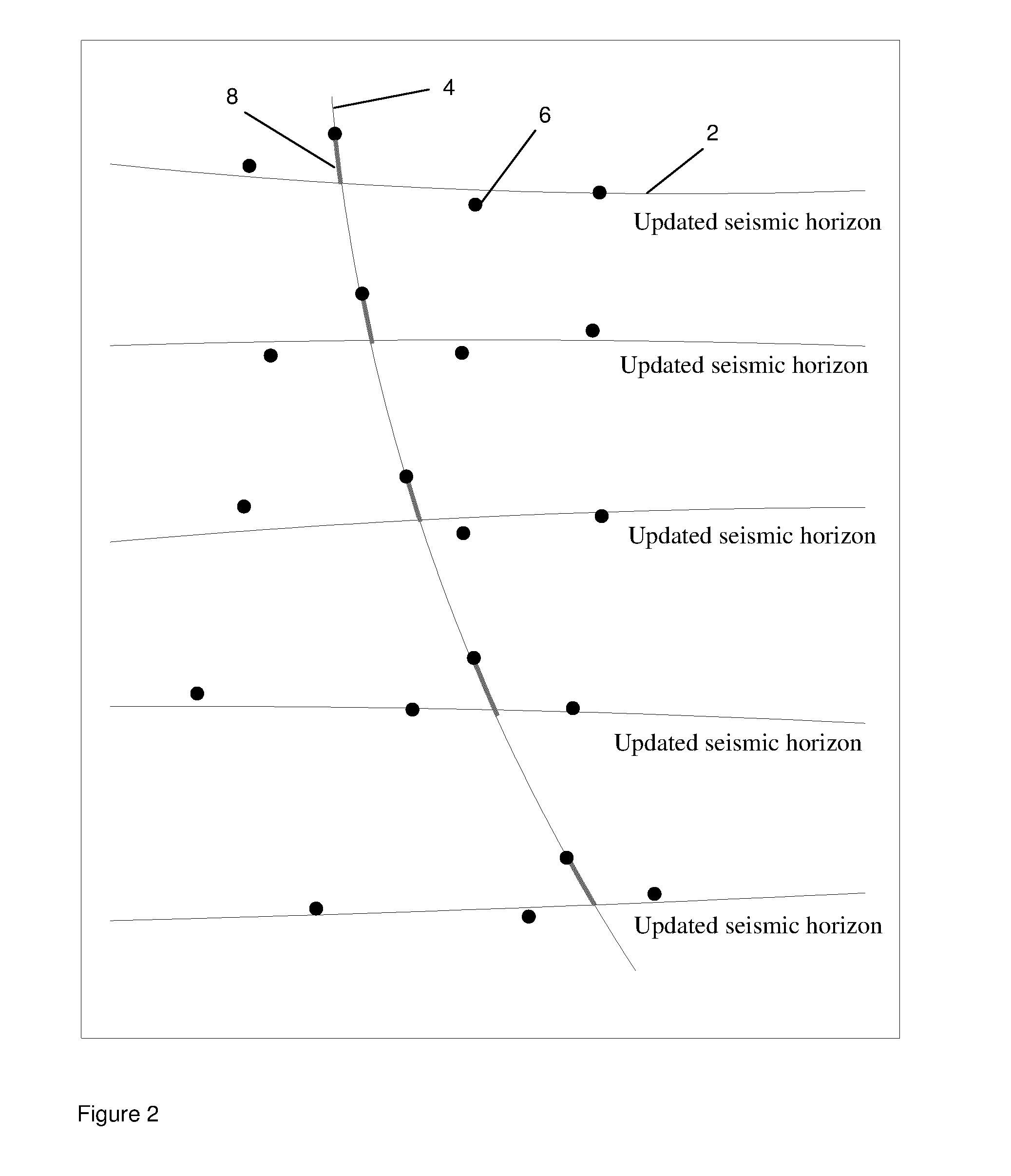Quality control of sub-surface and wellbore position data
a position data and quality control technology, applied in the field of quality control of subsurface position data and wellbore position data, can solve the problems of unexpected positional inconsistency, incorrect assumptions about the parameters of seismic velocity model, and large and small parts of observation data accuracy, so as to improve the position accuracy of the subsurface positional model, improve the probability of missing drilling targets, and improve the accuracy of the output
- Summary
- Abstract
- Description
- Claims
- Application Information
AI Technical Summary
Benefits of technology
Problems solved by technology
Method used
Image
Examples
Embodiment Construction
[0023]Our starting point is that we have a sub-surface model and a wellbore position model, which effectively represent two different models of reality, with the former being based for example on seismic data and the latter being based on positional data derived from a wellbore.
[0024]The method for QC evaluates the match between predefined test criteria and parameters calculated from observation data to decide whether geological common points are affected by gross errors. In this section the goal is to explain how the QC parameters are calculated, without using mathematical expressions. The methods for detection of gross errors presented here are based on utilizing outputs from an adjustment (e.g. least squares adjustment) of sub-surface and wellbore positional data. The outputs of interest are the updated positions of the subsurface and wellbore positional data and the corresponding covariance matrix (or variance matrix) which represents the quantified uncertainties of the updated ...
PUM
 Login to View More
Login to View More Abstract
Description
Claims
Application Information
 Login to View More
Login to View More - R&D
- Intellectual Property
- Life Sciences
- Materials
- Tech Scout
- Unparalleled Data Quality
- Higher Quality Content
- 60% Fewer Hallucinations
Browse by: Latest US Patents, China's latest patents, Technical Efficacy Thesaurus, Application Domain, Technology Topic, Popular Technical Reports.
© 2025 PatSnap. All rights reserved.Legal|Privacy policy|Modern Slavery Act Transparency Statement|Sitemap|About US| Contact US: help@patsnap.com



